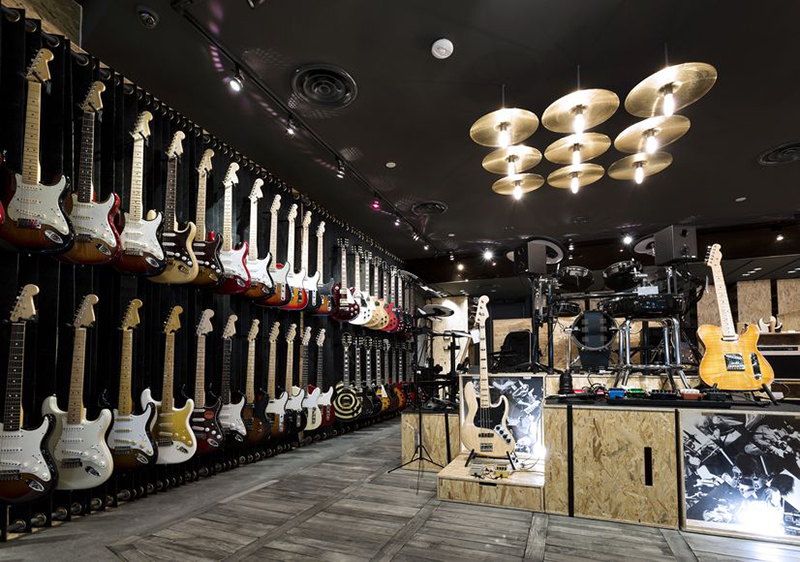
Key Decisions
The company I founded, Radial Engineering, started out as a specialty shop that supplied and manufactured cabling for the recording industry. In the early 1990s, professional studios were equipped with 24-track Studer recorders that needed copious amounts of multichannel cable, patch bays, and heaps of connectors.
But with the advent of the Alesis ADAT, we could see the sunset on the horizon. While we started to offer ADAT and Tascam cables, we also began to broaden our selection by importing and distributing a number of brands in Canada, such as Audix, PreSonus, Hafler and Sonex. The internet disrupted the market by making price parity a key component of the sales process, which in turn made it less profitable to distribute U.S.-made brands that could easily be sourced for less south of the border.
PreSonus eventually jumped ship to work with Jam Industries, the largest distributor in the world. Who could blame them? We were a small start-up while they had cash in the bank to both place big orders and finance dealer programs.
This led to the realization that we had to be in control of our own destiny, and the only way to do that would be to build our own brands. It started with Radial pro audio products and then Tonebone pedals. As we witnessed Sonnex losing market share to Auralex in the acoustical panel/treatment market, we responded by launching Primacoustic.
In early 2009, I sat down with our sales team and told them that we were going to go through some tough years. To deal with it, I urged them to focus on selling products that people need, not products that people want. In other words, there’s no point in trying to sell someone a brand-new BMW if they just bought a Mercedes last week.
We had to focus on direct boxes, going right back to our roots. As the economy tanked, most of our competitors stopped advertising, leaving magazines hungry for business. We negotiated bargain-basement rates and offered to buy empty pages at the 11th hour. In no time, Radial became one of the most visible brands in the industry and we created the DI product category, instead of a one-size-fits-all device that was previously dolloped in with cables.
We then bought Reamp and a few years later, Hafler and Dynaco. Did we diversify ourselves out of a market? Tough to say where things would have gone had I stayed on. Mike Hill, our general manager, would often say, “Why don’t we get rid of everything and simply sell DI boxes? We could get a smaller warehouse, reduce our staff and make way more money.”
From my perspective, brand selection gave us stability. If the pro audio market were to decline, then hi-fi brands like Hafler and Dynaco could potentially bring in the lost revenues. This idea was not my own. Back in the 1980s, Fender president Bill Schultz used his hand and spread out his fingers like a spider on a desk. He then lifted all his fingers, leaving only his index. He said with one brand (finger), you have no stability. By then spreading his fingers out again, he reinstated the importance of diversification. This stuck with me.
Diversification comes at a cost, however. When launching new brands, a company must be prepared to invest in the brand with marketing and sales. Merely putting up a website is not enough.
Further, key personnel have to go out and visit customers and get them to buy in. This takes time and money. If the sales team is already busy, adding more to their plate can reduce their efficiency and focus and negatively affect sales.
Expanding The Pool
Today, online shops like Sweetwater have expanded their offerings to include guitars, amplifiers and effects pedals. As they’ve done this, they’ve also increased their sales team to support their investment in new inventory and expanded their warehousing and shipping facilities.
Vintage King, a shop that originally had a strong online outlet in Detroit that specialized in high-end audio gear, not only has expanded with offices in Chicago, Los Angeles and Nashville, they too have added guitars and keyboards to their online sales. But unlike Sweetwater, which offers major brands like Fender, Vintage King is focused on lesser known brands such as Suhr with the potential to yield a higher return due to less competition.
Alto Music in New York State diversified by expanding its retail space to 55,000 square feet, creating a destination that enables the store to display more than 1,000 guitars. Alto also opened up a specialty recording shop in Brooklyn and has begun distributing specialty brands to other retailers.
When I asked owner Jon Haber how he foretells the future, he suggests that his “brick and mortar” success is due to his well-educated staff, yet he also believes that future growth will come from online sales. I followed up by asking him about Walmart’s strategy of ordering online while offering a local pickup site, and he pointed out that this makes it easy for the consumer to return a product versus having to repack it and ship it back to Amazon.
Because these major retailers have the traffic and market reach, and also have built consumer trust, they can capitalize on it by expanding their offerings without having to necessarily have the product on hand. For instance, Costco online does not actually carry much product at all – it’s warehoused by the manufacturer and is shipped directly to the customer from one of many warehouses.
When retail businesses get too big to handle the details or become too comfortable, smaller shops will come to the rescue and take on the task by splintering off some of the business. It’s simply a matter of following cycles and parallels.
